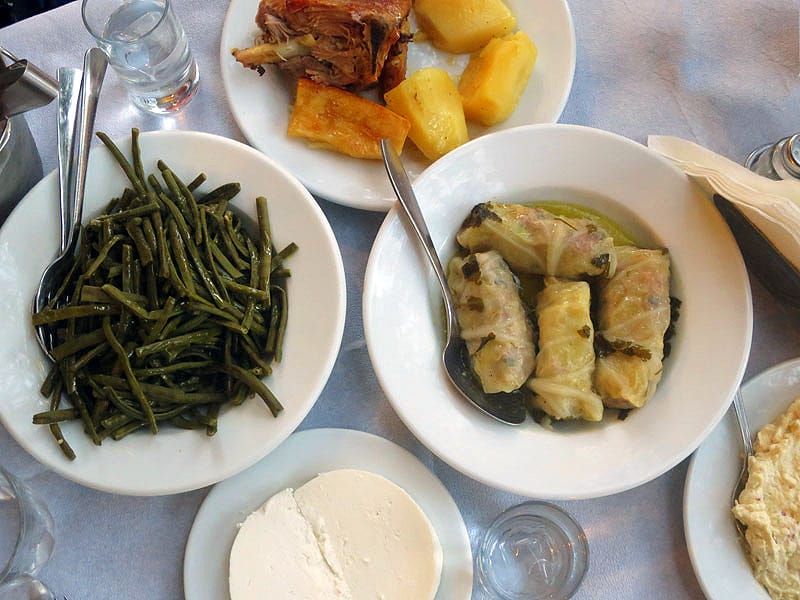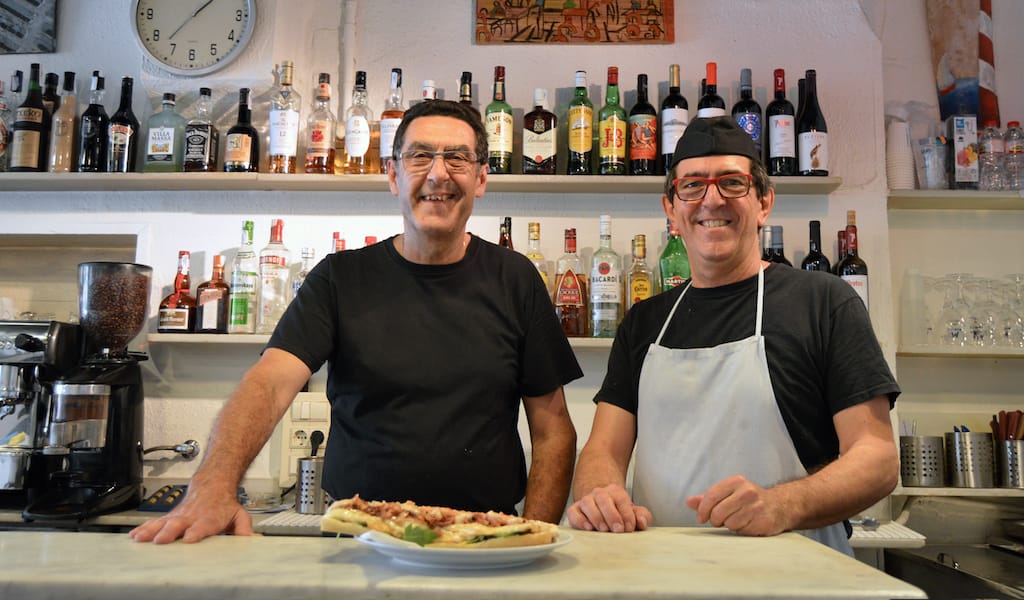The most characteristic Greek dishes, the ones all Greeks know from their mothers and miss when away from home, are known as tis katsarolas, or “of the pot.”
They can be meat stews or vegetable stews, often cooked with generous amounts of olive oil. Although one can find these dishes in many tavernas and restaurants in Greece, they are very rarely done correctly: bad ingredients, dubious oil and lack of freshness can affect both texture and taste and give unappetizing results.
In Athens, however, Taverna tou Oikonomou in Ano Petralona specializes in this type of home-style cooking and does everything deliciously by the book: 15 to 20 dishes are prepared fresh every day with no microwave in sight. Anything left over is given away to families in need, not reheated and served to customers the next day.
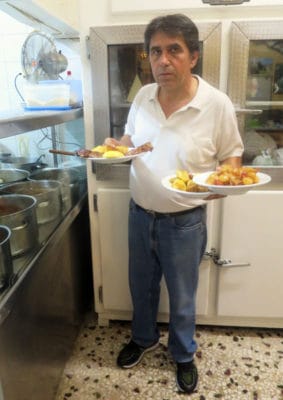 The tavern has been serving this type of food since 1930, which makes it one of the oldest in Athens. Kostas Diamantis, the current owner who took over in 2000, is very picky when it comes to how food should taste. “I shop everyday from trusted vendors and hand-pick my vegetables one by one,” he told us during a recent visit. “We only use olive oil in our dishes for its superior taste and texture. The only frozen vegetable we buy is okra” – the taverna is famous for its cooked okra and has clients who come just for that dish – “and that is only in the winter, when it is not available in fresh form.”
The tavern has been serving this type of food since 1930, which makes it one of the oldest in Athens. Kostas Diamantis, the current owner who took over in 2000, is very picky when it comes to how food should taste. “I shop everyday from trusted vendors and hand-pick my vegetables one by one,” he told us during a recent visit. “We only use olive oil in our dishes for its superior taste and texture. The only frozen vegetable we buy is okra” – the taverna is famous for its cooked okra and has clients who come just for that dish – “and that is only in the winter, when it is not available in fresh form.”
The eatery is housed in a beautiful ochre Greek house built in 1918. The walls are covered with impressive artwork, all gifts from famous Greek artists of past and present who are loyal customers. “These paintings belong to the taverna. Even when I am gone, they will still be here,” Diamantis told us with pride.
There is some outside seating on lovely Kithantidon and Troon streets, which are full of old houses turned into eateries. Ano Petralona was historically a working-class neighborhood whose name derives from the words aloni (“threshing floor”) and petra (“stone”) – ano means “upper” – as there were once large threshing floors in the area for locals to process their grains. Nowadays, it is home to a hip, alternative crowd and has become a dining and nightlife destination. “This is not development in my opinion,” Diamantis said. For locals, nightlife brings its own problems and can hinder everyday life.
Diamantis’s views on Greek food are definitively purist, and after tasting the food that the cook, Ms. Garifallia, and Diamantis’s son, Giorgos, make in the kitchen we could understand why.
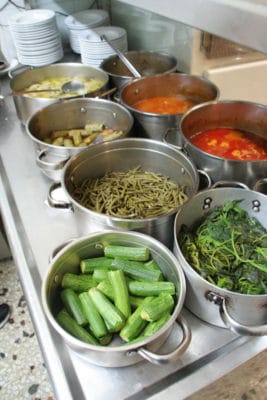 The pristine kitchen is visible to customers, and many come in to have a look at what’s bubbling in the pots. We were impressed by the lack of a frying pan, but then again they do not serve anything fried, not even french fries, a staple of Greek tavernas. The menu has changed very little since the place opened in 1930, which explanins why it is passionately loved by locals.
The pristine kitchen is visible to customers, and many come in to have a look at what’s bubbling in the pots. We were impressed by the lack of a frying pan, but then again they do not serve anything fried, not even french fries, a staple of Greek tavernas. The menu has changed very little since the place opened in 1930, which explanins why it is passionately loved by locals.
We ordered stuffed cabbage leaves – tasty and pleasantly soft. “The secret is in the use of ground pork together with the ground beef in a 70-30 ratio,” Diamantis said. He shared more of his food wisdom as we devoured the generous portions of roasted leg of lamb with oven potatoes, spicy feta cheese and boiled green bean salad. Again, all expertly cooked.
Prices are very reasonable, and perhaps that is why most tables were full on a Tuesday evening. Bookings are highly recommended, especially on weekends.
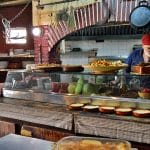 May 31, 2021 La Parra
May 31, 2021 La Parra
Dust, sweat, rain, and severe sun – these were only a few of the many discomforts that […] Posted in Barcelona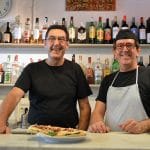 June 24, 2019 Guixot Restaurant
June 24, 2019 Guixot Restaurant
For a century and a half, the building housing Guixot has taken on many personalities – […] Posted in Barcelona January 12, 2018 Shavi Lomi
January 12, 2018 Shavi Lomi
In the Caucasus, guests are considered gifts from God. Georgians like to call them okros […] Posted in Tbilisi
Published on October 28, 2016
Related stories
May 31, 2021
BarcelonaDust, sweat, rain, and severe sun – these were only a few of the many discomforts that travelers of yore suffered as they made the long journey in horse-drawn carriages from their home provinces to Barcelona. In those days – around a century or two ago – the city was protected by fortified walls; it was…
June 24, 2019
BarcelonaFor a century and a half, the building housing Guixot has taken on many personalities – though one thing has remained the same: It’s always housed some type of bar that also served food. Now a tapas bar celebrated for its sandwiches, brothers, partners and cheery owners Francisco and José Gutiérrez Murillo have been running…
January 12, 2018
TbilisiIn the Caucasus, guests are considered gifts from God. Georgians like to call them okros stumrebi – “golden guests” – an endearment that illustrates the stature the ever-hospitable Georgians give to those they host. And whenever our own golden guests come to visit in this remote corner of the world, we never fail to entertain…







































